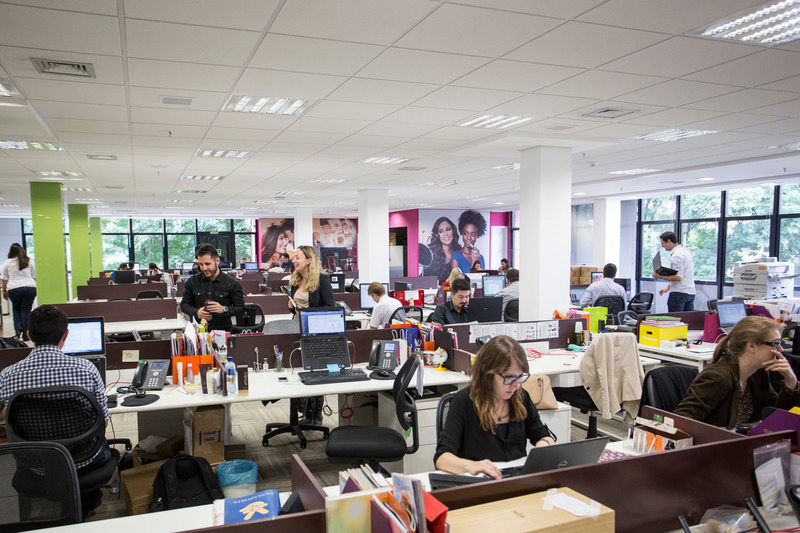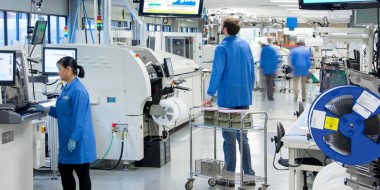ERP
Digital Transformation & ERP: Why Enterprises Need to Modernize Now
February 19, 2020 | Written by: Keith Costello
Categorized: Agile Methods | Automation | ERP
Share this post:
 Building a cognitive enterprise – one that can respond immediately and intelligently to streams of real-time data – requires agility across the information backbone. For many, that backbone is the enterprise resource planning (ERP) system, that connects all operations, from sales and customer management, to inventory and finance.
Building a cognitive enterprise – one that can respond immediately and intelligently to streams of real-time data – requires agility across the information backbone. For many, that backbone is the enterprise resource planning (ERP) system, that connects all operations, from sales and customer management, to inventory and finance.
It’s one of the reasons SAP, the ERP industry leader, has revamped and slimmed down its platform. The company wants to enable customers to race through information, grow with AI, and be able to respond to changing conditions in real-time, often automatically.
The paradox, however, is that the crucial transition to a nimbler platform can be dragged down in costly delays. For example, about 13,000 SAP legacy customers are currently busy transitioning to SAP S/4HANA, with 56 percent of other customers indicating they have plans to move to the new platform in the future. This massive effort is limited by a finite number of trained and certified consultants. Even companies that land teams of skilled workers face a rugged transition that can last upwards of a year or more, with multiple phases involving different locations. What’s worse, everyone must make the transition by 2027, when support for previous iterations of SAP software will end, avoiding additional software license costs or even losing official SAP support for older platforms.
What the industry needs—sooner rather than later–is a faster, more agile process. This is what drove us to develop the IBM Rapid Move for SAP S/4HANA. The program starts with standardized templates, ones that can handle big chunks of each company’s transition with the same processes. Customers can tailor plenty around the edges. But there are common cores that many of them share. The all too common “greenfield” approach is to build each deployment from scratch. This start from scratch approach is not the right approach for everyone. Standardization across any and all approaches speeds up the work.
The second element is automation, informed by AI. Here IBM’s customers can use key strategic technologies to accelerate the transition. This helps them pull off the equivalent of a corporate brain transplant without disrupting their ongoing business.
Vodafone Germany GmbH, the leading telecom provider in Germany, is racing to provide customized services to consumers, often in real time. With over 50 million wireless cards, nearly 11 million broadband and 14 million television customers, its challenge has been to continue servicing the company’s users while migrating business applications to a new ERP system with some 11 terabytes of data, much of it sensitive. The transition, according to Vodafone, took half the time of the usual SAP S/4HANA upgrade.
Using the IBM HANAtization Console for automatic conversion of Vodafone’s custom developed coding and business logic, the telecom company says it was able to have this logic HANA-compatible and additionally reduce its own code by 60 percent. This cut down complexity and made it easier to maintain. These optimizations, along with the possibility to migrate selective data, also shrunk the data volume by 90 percent, which helps significantly reduce storage and maintenance costs.
But a company’s digital transformation involves far more than updating and optimizing networks, hardware and software. Each effort hinges on workplace culture, and a workforce with skills, know-how and resilience to manage systems built upon AI and intelligent automation. According to a recent IBM Institute for Business Value (IBV) study, only 41 percent of CEOs surveyed say that they have the people, skills and resources required to execute such business strategies.
The IBM Rapid Move transition addresses this issue. It involves training in-house technicians for the skills that are central to digital transformation. They need these skills not only to adapt the new ERP systems, but also to manage the cognitive enterprises we’re all building.
Time is of the essence. The 2027 deadline looms for SAP S/4HANA upgrades. But it’s not too late to line up the right tools for a smoother and lighter transition and the transformation, both in computing and culture, that it will unlock.

Global Vice President & General Manager, IBM Services
How AI is Driving the New Industrial Revolution
AI adoption is growing faster than many had predicted. Research from a recent Global AI Survey by Morning Consult and commissioned by IBM indicates that 34 percent of businesses surveyed across the U.S., Europe and China have adopted AI. That number far exceeds estimates from market watchers last year, which put adoption rates in the […]
How IBM’s Biggest Business Unit Got Agile
Transformation in today’s business is rarely easy. But when changes must be made within an organization of well over 100,000 employees, it can be downright hard. That’s exactly where IBM’s Global Technology Services (GTS) unit found itself two years ago. With a rapidly expanding global ecosystem and mounting IT complexity, the unit needed a new, […]
GDPR & Protecting Data Privacy with Cryptographic Pseudonyms
Within two years, most of today’s cybersecurity technologies will be obsolete. Since the beginning of 2016, hackers have stolen more than 8 billion records – more than double the two previous years combined – and that doesn’t account for unreported intrusions. The current system of patches, firewalls and blacklists isn’t working. It’s no match for […]


